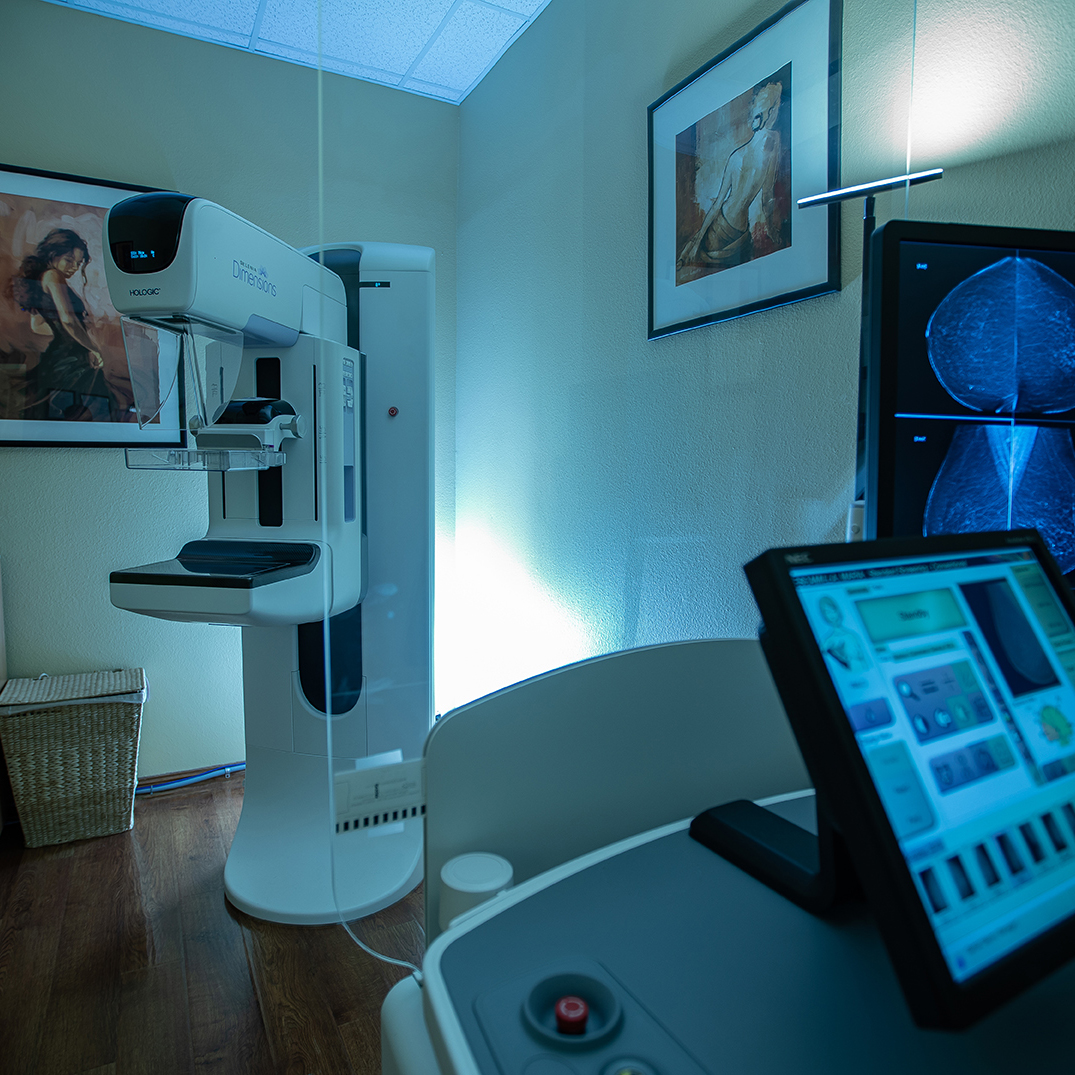1
BENEFITS OF OPEN MRI FOR ALL PATIENTS
A digital mammogram is kind of like your digital camera. We can see images immediately.
Digital mammograms tend to be higher in contrast. We know that digital mammograms are better for women who have dense breast tissue, are under the age of 50, or are pre-menopausal.
2
Exam Prep
Before scheduling a mammogram, the American Cancer Society (ACS) and other specialty organizations recommend that you discuss any new findings or problems in your breasts with your doctor. In addition, inform your doctor of any prior surgeries, hormone use, and family or personal history of breast cancer.
Do not schedule your mammogram for the week before your period if your breasts are usually tender during this time. The best time for a mammogram is one week following your period. Always inform your doctor or x-ray technologist if there is any possibility that you are pregnant.
The ACS also recommends you:
• Do not wear deodorant, talcum powder or lotion under your arms or on your breasts on the day of the exam. These can appear on the mammogram as calcium spots.
• Describe any breast symptoms or problems to the technologist performing the exam.
• If possible, obtain prior mammograms and make them available to the radiologist at the time of the current exam.
Ask when your results will be available; do not assume the results are normal if you do not hear from your doctor or the mammography facility.
3
What to expect
- Even out the breast thickness so that all of the tissue can be visualized.
- Spread out the tissue so that small abnormalities will not be obscured.
- Allow the use of a lower X-ray dose.
- Hold the breast still to eliminate blurring of the image caused by motion.
- Reduce X-ray scatter to increase picture sharpness.
cONTACT us
Open MRI
Open MRI of San Antonio
PACS login can only be opened using Chrome or Edge browser

